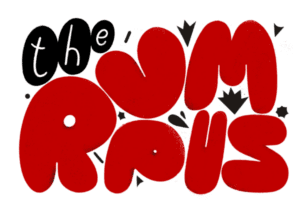
“For me writing is indeed very close to collection, but it is not a process of collection, much rather a way for cataloging your collection.”
An Introduction to The Rumpus International Rivers Interview Series
The International Rivers Interview Series was born of two unrelated events. The first was a Roni Horn exhibit I saw some years back in New York featuring the work Still Water (The River Thames, For Example). Horn framed multiple close-up shots of the Thames passing through central London and approached the river with a number of questions. I remember Horn asking, ‘What is the color of water?’ and the elegant simplicity of that question struck me. One answer is that it has no color, that water is a body that either reflects its surroundings by throwing back a visual reply or absorbing organic matter. Water is, Horn later said, “a master chameleon. Or the ultimate mime.” Could rivers like the Thames, I wondered, reflect more than mud, trees and bridges, but history and culture too?
There’s reason to believe they already do. Consider the so-called birthplace of civilization, cradled by the sinewy arms of the Tigris and Euphrates; or China’s race towards modernization and the Yangtze, a river recently transformed into the largest power plant in the world by the Three Gorges Dam. These rivers have outgrown their ecological or commercial roles; they help us narrate a global history. In the U.S., rivers were the veins and arteries of a growing nation long before railroads were ever dreamed of. In time, they became potent cultural symbols— the Mississippi of The Adventures of Huckleberry Finn, for example—and these symbols, I believe, continue to be very real. When Borges paid a visit to Twain’s Missouri home in 1986, the nearly-blind and greatly aged author dipped his hand into the Mississippi. Raising it out of the water, Borges said “Now I understand the essence of America.”
Rivers also have the unique characteristic of straddling and rupturing borders. The Mekong travels through six countries; the Nile and Danube pass through ten each. Spaces of conflict, cohabitation and occasionally cooperation, rivers continue to be primal resources, intertwining the communities that border them for better or worse. This is as true for the Jordan River which divides Israel and Syria, as it is for the length of the Rio Grande that separates Texas from Mexico.
My second reason for putting this project together is a statistic I’ve never been able to shake: of the some 15,000 literary titles released in the US yearly, only about 300, or 2% are translated. Aside from depriving American readers and international authors, these figures reinforce a skewed sense of the world. How many of us can name three contemporary authors from China, a country of 1.3 billion? If given context, I thought, maybe these books might not seem so alien—and authors, I decided, were the best source for context.

The goal of the River Interview project is two-fold: to introduce and promote a group of authors; and to let these authors provide a cultural context for reading and understanding their work. I chose the Danube as the first river in the series after reading one of the most astounding books I’ve ever come across: Claudio Magris’ Danube: a sentimental journey from the source to the Black Sea (1981). The Danube is a good launching pad and rich in literary history—Goethe often strolled along its banks for inspiration; Kafka could see its waters from the window of the sanatorium in which he spent his last days.
The four authors included in this series—Sasa Stanisic, György Dragomán, Dumitru Tsepeneag and Dubravka Ugresic—were chosen after correspondences with friends, publishers, professors and literary organizations. They are writers whose work I admire intensely. Each of their stories is unique; each of their voices is clear and articulate; each of their books offers a single answer to the question: What color is the Danube?
***




